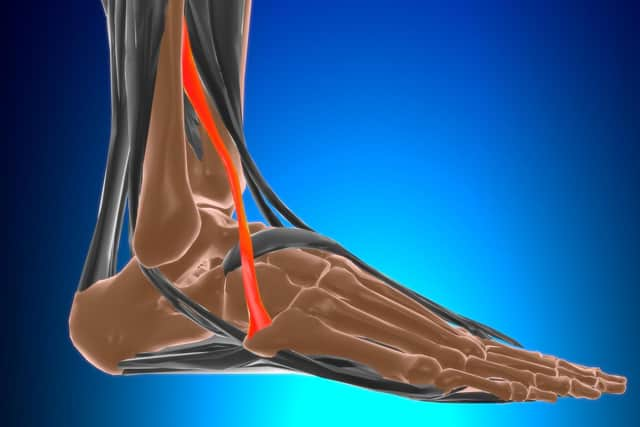Dr's Casebook: Peroneus tertius muscle is an appearing muscle which is helpful in running
and live on Freeview channel 276
Dr Keith Souter writes: This week I have been focused more on larger running muscles.
I took part in the Wakefield Hospice 10k last Sunday morning.
Advertisement
Hide AdAdvertisement
Hide AdI would have liked to be able to keep up with the top half of the field, but at my age I am more concerned about completion of the race to pick up one of the coveted finisher T-shirts rather than my time.


I accept the facts of increasing age and that some people’s bodies are better equipped than others.
By and large we all have the same muscles, yet there are sometimes subtle differences. Anatomically, each muscle has an origin and an insertion. Its origin is the bone that it is anchored to, and its insertion is to the bones or structure that it has the function of moving.
Both the origin and the insertion can vary slightly in individuals.
Advertisement
Hide AdAdvertisement
Hide AdIn addition to these subtle differences, there are muscles that are ‘coming’ or ‘going.’
They represent an element of proof about Charles Darwin’s Theory of Evolution, because these ‘coming and going’ muscles represent muscles that are appearing in a species or ones that are gradually disappearing.
The palmaris longus that not everyone has is a disappearing muscle in the hand.
By contrast, the peroneus tertius muscle is an appearing muscle, which is helpful in running.
Advertisement
Hide AdAdvertisement
Hide AdIt is also sometimes called the fibularis tertius. Peroneus is from the Greek and fibularis is from Latin.
Both imply ‘brooch-pin,’ since the fibula, the smaller of the two bones of the lower leg, from where it is anchored was called this by early anatomists because it resembles a brooch.
The muscle stretches across the ankle to the outside of the foot. Its function is to stabilise the ankle, and to evert and dorsiflex the foot. That is, to pull it upwards.
This muscle can be an advantage to runners and sport players who have to rapidly change direction. To avoid calf muscle strains when running I have consciously trained myself as a mere plodder to be a heel-toe runner rather than a forefoot runner or sprinter.
Accordingly, I have been focusing on my appearing Peroneus tertius muscles with every step. They did the job well enough last Sunday.